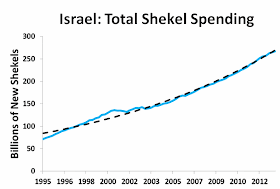Has the time come to consider phasing out anonymous paper currency, starting with large denomination notes? Getting rid of physical currency, and replacing it with electronic money, would kill two birds with one stone.
First, it would eliminate the zero bound on policy interest rates that has handcuffed central banks since the financial crisis. At present, if central banks try setting rates too far below zero, people will start bailing out into cash. Second, phasing out currency would address the concern that a significant fraction, particularly of large denomination notes, appears to be used to facilitate tax evasion and illegal activity.
Not so fast. One can solve the zero lower bound (ZLB) problem without eliminating paper currency. All that is needed is to either (1) allow the exchange rate between deposits and paper currency to fluctuate or (2) have a systematic approach to monetary policy that is very aggressive when the treat of the ZLB is looming. The former would create a discount on paper notes during slumps so that the Fed could impose a negative nominal interest rate on deposits and get away with it. The latter would use a nominal GDP level target which would both raise money velocity via expectation management and commit the Fed to do whatever is necessary to hit the level target. Both approaches should take care of the ZLB problem. Miles Kimball has written extensively about the first approach and Scott Sumner done the same for second one. Read here for the details of these plans.









